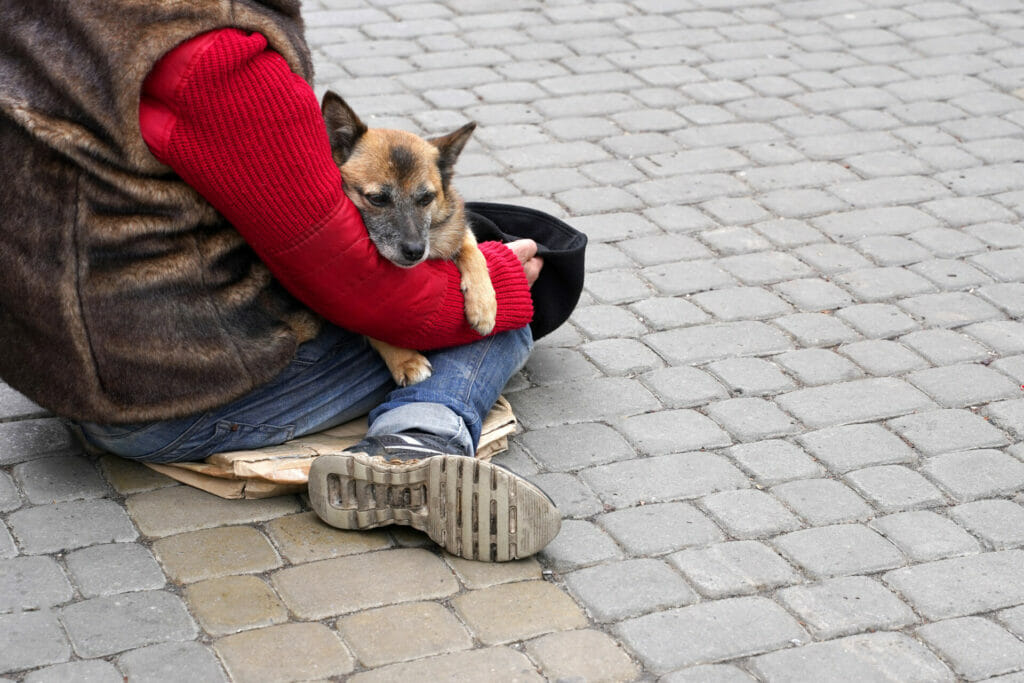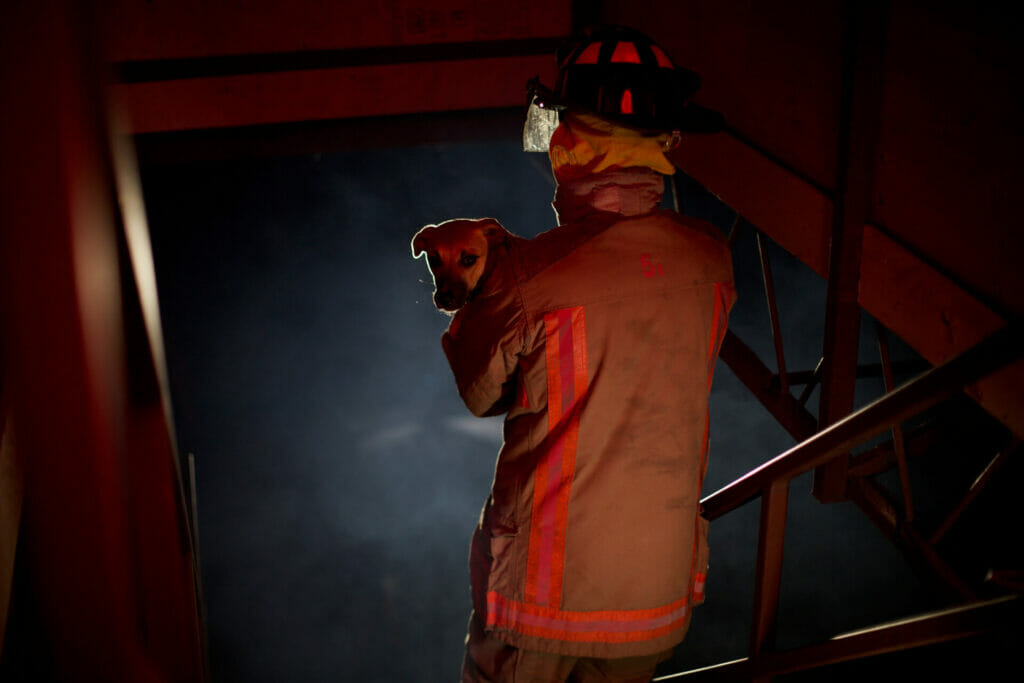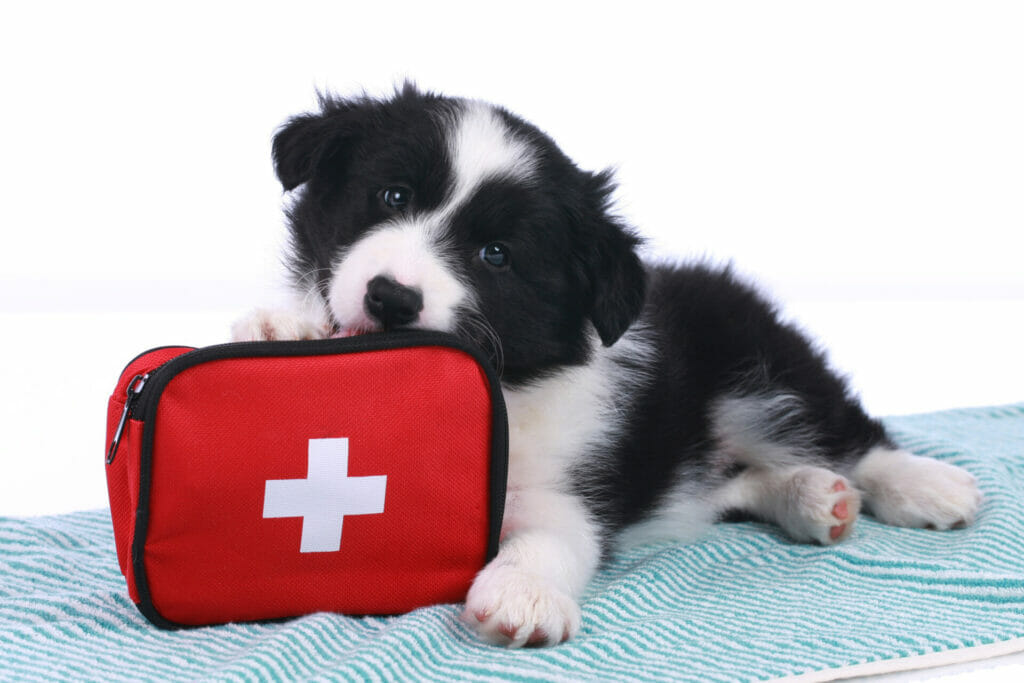Did you know it’s pet preparedness month? We want you and your pup to be ready for anything that’s thrown your way. We partnered with JUDY, experts in emergency preparedness to share tips on how to best prepare for emergency situations as a pet parent. This week we partnered with JUDY survival expert, Soraya Sutherlin MPA, CEM®, to discuss relief shelters with your pet and how you can prepare for disaster before you’re forced to evacuate.

What are some disaster scenarios pet parents should prepare for?
There are generally four different evacuation types to consider when preparing for emergencies. These are all based on how soon you receive a warning and whether you have time to prepare before evacuation.
The first possible situation is one where you’re home and need to evacuate with your pet. You receive the evacuation alert and have enough time to gather supplies and your pets in order to evacuate. This might be the case for a wildfire warning, tornado warning, hurricane warning, or severe storm warning.
The second possible situation is one where you need to evacuate your pet, but can’t make it home on time. A disaster happens too suddenly (or you are too far away from home when it happens) for you to get to and evacuate your pet on time. This might be the case for wildfire evacuations, a house fire, a tornado, tsunami, mudslide, or flash flood.
The third scenario is one where you need to evacuate and leave your pet behind. This would be a situation that is immediate, life-threatening, and happens with little warning. This might be the case for house fires, mudslides, or tornadoes.
A final scenario is one where you’d have to shelter in place during an emergency, like during a blizzard or tornado. It’s in these situations where having a strong stockpile of supplies at home is vital. Consider keeping a supply of water and dog food in addition to pee-pads to make it easier for your pet to use the bathroom when they can’t leave the house.

How do you know where to seek shelter with your pet in the event of an emergency?
Have a sense of shelter locations before a disaster, particularly if you live in an area prone to certain disasters that might require evacuation. Your town or municipality’s website has emergency shelter locations. You should get all the details regarding where they will be set up, regulations for pets, and what documentation you’ll need ahead of time.
How do you find shelters that will accept pets?
According to the PETS Act, most states have made it part of their emergency plans to allow individuals to bring their pets into emergency shelters. If your town or municipality website doesn’t contain information for you to see if it’s pet friendly, you can call your local Parks & Recreation or Community departments. It is important to remember that these details can change depending on the emergency at hand. For example, if there’s a tsunami warning, coastal shelter locations will no longer be viable). Another viable option are hotels or motels and you can identify pet friendly ones in advance. Just ensure you have a few different options in case your first option is located inside the evacuated zone.

Are there specific survival preparations I should take if I have a medical service animal?
By law, shelters must allow your service animal to accompany you into any emergency shelter, even if they are not “pet friendly”. According to the ADA, in case of an emergency, shelters are allowed to ask if you require your dog because of a disability and what work or task your dog can perform. As handler, you are responsible for care and behavior, so can be asked to leave if the dog is disruptive or poses a threat to the health or safety of others.
Are there specific preparations I should take if I do NOT have a medical service animal?
It is key to remember most pets are not guaranteed entry to shelters and rules and regulations vary based on area and shelter. Do your research to figure out which shelters accept pets and what documentation you should have for your pup to be allowed in. This often includes medical and immunization records, adoption papers, and proof of ownership. Remember to include hard copies of the documentation in your emergency kit!

What should you pack in advance for your pet to bring into a shelter?
Luckily the emergency kit you have prepared for yourself and your family can be used for your pup as well but there are a few important essentials to include: vet records, medications, your pup’s food, pet identification, adoption documentation or proof of ownership, your vet’s number written down, and a photo of you and your pet printed out. The last one is important for rescuers in the chance that you and your pet get separated while evacuating (having them chipped is also helpful for this).
Any final tips you have regarding preparing for survival in shelters?
Always remember that you shouldn’t just rely on government shelters as your ONLY options for pets. Talk to your family about an evacuation plan: who will grab which of your pet’s supplies, where the supplies are kept, and more. It is also helpful to talk with your neighbors and immediate community so that if you’re not home or have to leave alone, you know who to call. Consider developing a “buddy system” with a neighbor, to check on each other’s animals during a disaster if one of you can’t get home.
You should also exchange information on veterinarians with a friend and have written authorization on file with your vet. Authorize your pet sitter or “buddy” to get necessary emergency treatment for your animal. Finally, think about ordering these free pet preparedness stickers from the ASPCA to put in your windows letting first responders know that there is a pet in your home.
Want to learn more about pet preparedness for emergency situations? Reach out to us at whatthepup@spotandtango.com




















